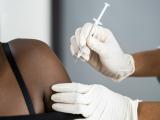One dose of the Jynneos vaccine was 58% effective against mpox infection overall and 84% in people without HIV, but only 35% in those with HIV, according to an observational combined study published yesterday in The Lancet Infectious Diseases.
Researchers in Germany enrolled 6,265 men who have sex with men (MSM) and transgender adults with changing sexual partners from 31 HIV and infectious-disease clinics to evaluate the safety and effectiveness of one and two doses of Jynneos against mpox infection from July 2022 to December 2023. In total, 3,850 participants received at least one mpox vaccine dose, and 3,636 received two over the study period; 4,788 were included in the safety cohort.
Because mpox cases fell rapidly in 2022 after vaccine rollout and recruitment into the prospective study, the team also conducted a retrospective emulated target efficacy trial involving 3,064 vaccinated and 6,111 unvaccinated participants with the same study center network and inclusion criteria to capture the period of high incidence from July to October 2022. A total of 3,052 people were included in the effectiveness cohort.
"More than 115,000 cases of mpox have been confirmed since the onset of a global outbreak in 2022," the study authors noted. "The third-generation smallpox vaccine modified vaccinia Ankara–Bavarian Nordic (MVA-BN) [Jynneos] was recommended for at-risk populations in 2022, despite a scarcity of data on safety and effectiveness against mpox."
Infections halved in vaccinated participants
Among the 6,459 people enrolled in the prospective study, adverse reactions were uncommon (first dose, 0.35%; second dose: 0.14%). Local reactions were more common after the first dose (70.2%) than the second (56.8%). Likewise, systemic reactions also occurred more often after the first dose (22.3%) than after the second (17.6%).
The most common local reaction was mild pain at the injection site with pressure or movement after the first (46.7%) and second dose (40.6%). Severe local reactions were rare (first dose, 1.6%; second dose, 1.9%). Severe systemic reactions (eg, fever, fatigue, muscle pain, headache, nausea and vomiting, diarrhea) were rare, at 2.5% after the first and 1.9% after the second.
The significant reduction in symptom severity and the reduced infection risk observed in vaccinated individuals suggests a high value of broad vaccination coverage during acute outbreaks.
In the retrospective study, after a median follow-up of 55 days, 16 vaccinated participants contracted mpox, compared with 32 of their matched, unvaccinated peers. Vaccine effectiveness (VE) at least 14 days after one dose was 57.8% overall, 84.1% in participants without HIV, and 34.9% in those with HIV.
"The reason [for lower efficacy among HIV patients] is presumably that developing immune protection after vaccination requires specific immune cells called T cells," senior author Leif Erik Sander, MD, of Charite–Universitatsmedizin Berlin, said in a Charite news release. "These T cells often appear at lower levels in people with HIV and are not fully functional, which translates to a weaker immune response."
Because no mpox cases occurred among the 211 people who received two Jynneos vaccine doses, the researchers couldn't estimate the effectiveness of two doses.
Skin-lesion healing took a median of 10 days in vaccinated participants, compared with 18 days in the unvaccinated. Systemic symptoms occurred in 78.2% of unvaccinated people and 45.5% of their vaccinated counterparts. When systemic symptoms did occur, vaccinated participants had markedly fewer symptoms.
Nine of 298 unvaccinated (3.0%) and no vaccinated participants were hospitalized, and no mpox-related deaths were reported. Of all participants with post-vaccination infections, 70.8% were living with HIV, compared with 56.0% of their unvaccinated peers.
"The significant reduction in symptom severity and the reduced infection risk observed in vaccinated individuals suggests a high value of broad vaccination coverage during acute outbreaks," the researchers wrote. "The results of the current study also emphasise the need for a full vaccination series of two doses, particularly in people living with HIV, with important implications for global and national vaccination strategies."
HIV patients may need extra doses
In a related commentary, Angelo Roberto Raccagni, MD, and Silvia Nozza, MD, both of Vita-Salute San Raffaele University in Italy, noted that one or two mpox vaccine doses may not be enough to protect people with weakened immune systems, such as those with HIV.
They also called for research on mpox VE in low-income regions such as Central Africa, where clade 1 is circulating.
"In this setting, where mpox has been endemic for years, access to vaccines remains scarce and with insufficient data on how MVA-BN works in Central African populations," Raccagni and Nozza wrote. "We need longer follow-ups, better understanding of the need for boosters, and targeted research in resource-limited settings. As new mpox outbreaks emerge, refining vaccination strategies with robust and globally relevant evidence is not just an academic exercise, it is a public health imperative."




















